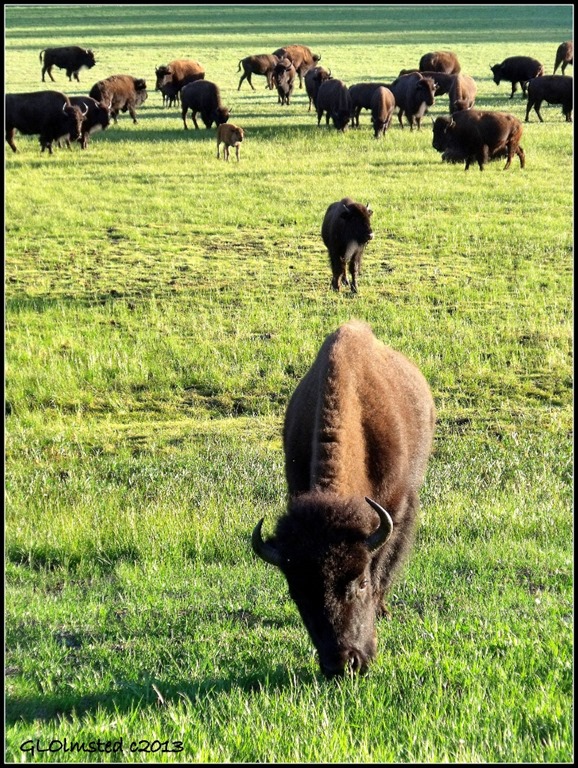Not really beefalo but a hybrid of Bison and cattle first bred during the early 20th century on the Kaibab Plateau.
There is no such thing as Buffalo in America. You have to go to Asia or Africa to see true Buffalo. There are Bison. They can be seen at Custer State Park, Yellowstone and Wind Cave National Parks and privately owned ranches, but not at Grand Canyon.

Charles Jesse “Buffalo” Jones experimented with breeding cattle and bison around the end of the 19th century in Kansas to produce Cattalo or Beefalo, a misnomer for Bison hybrids. Then in 1906 he convinced the federal government to donate land on the Kaibab Plateau north of the Grand Canyon and partnered with “Uncle” Jim Owens to continue his experimental cross breeding. After several years, investors withdrew their funding of the project so Jones sold the cattle and gave Owens the bison.

Also in 1906, Theodore Roosevelt appointed Owens as the game warden of the Grand Canyon Game Preserve and in 1926 he sold his “beefalo” to the State of Arizona.

Their legacy still roams the Kaibab Plateau today.

House Rock Valley & Vermilion Cliffs
Some of the herds stay in the House Rock Wildlife Area east of the plateau. But many “beefalo” wander over the invisible, or partially fenced, border into the National Forest and Park.

Beefalo patty
Hunting licenses are issued by Arizona Fish & Game and the hunt is described as “a world renowned opportunity and experience.” These “Bison” are considered to be the hardest to hunt of the true free ranging herds. Of course the limited issued license will cost you at least $1000 and there’s no guarantee or refund.

Beefalo hoof print
Plus they can’t be hunted in the National Park where they sometimes seem to run for safety.

And cause “Beefalo Jams” along the roadway.

Where tourons visitors often get out of their vehicles to take photos and get perilously close to these humongous and fast moving creatures.

Crane Lake
Once in the park, the National Park Service is committed to protecting these non-native species. Small lakes on the meadows have been fenced to keep the beefalo out and allow the wildlife in.

When these animals were DNA tested they show a higher amount of bovine than bison. Uncle Jim’s strain was certainly not pure and they’ve been breeding every since.

There is ongoing discussion about what to do with the large herds. Game & Fish estimates the current count is over 300 head, over twice the limit of sustainable management. (2018 update: 600-800 head and the agencies are still talking about it.) Students at Northern Arizona University conducted research. Four government agencies–Arizona Game & Fish, Bureau of Land Management, Forest Service and National Park Service–continue to discuss what to do while the population continues to increase.
So don’t be fooled when you drive into Grand Canyon’s North Rim and see these bison hybrids, much smaller than the real deal which you can see in Yellowstone National Park.


